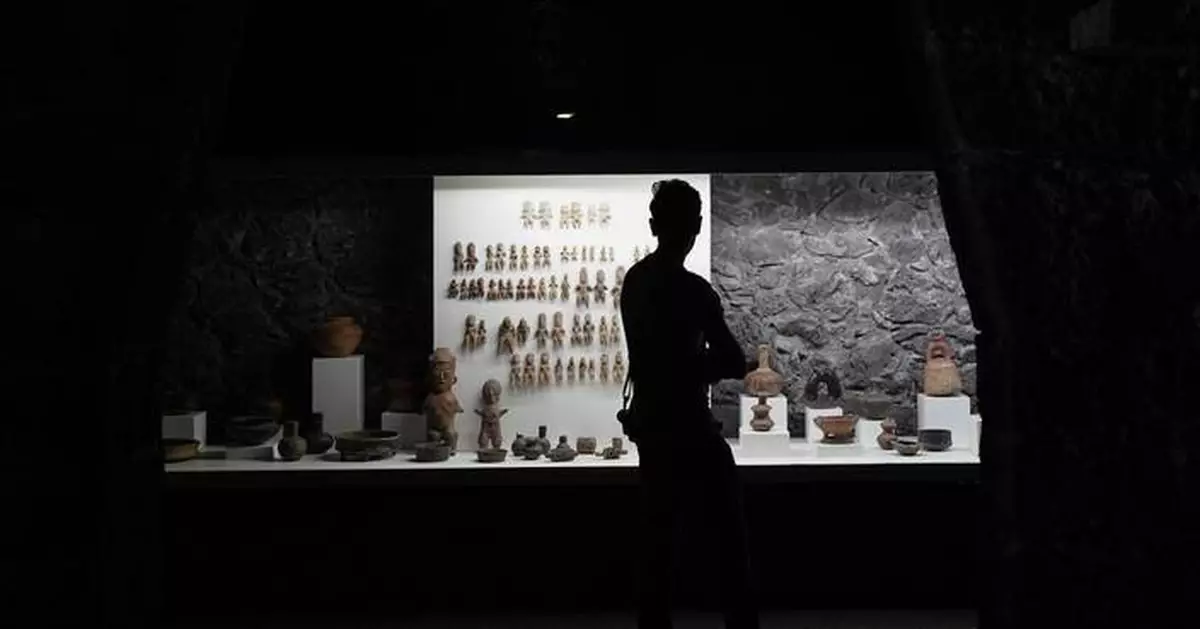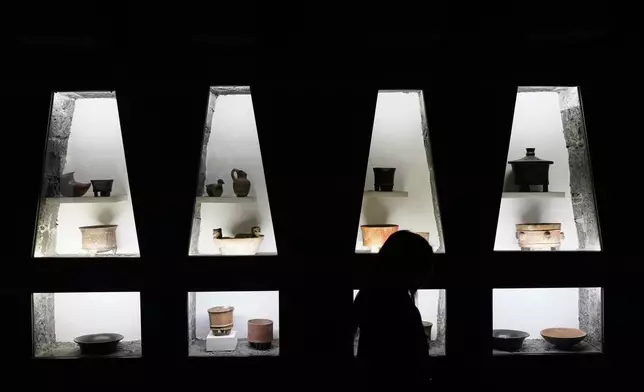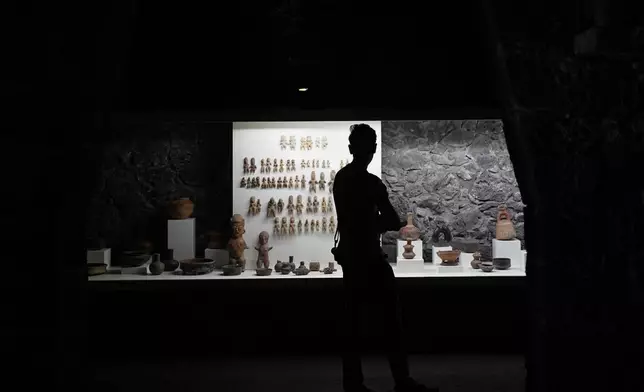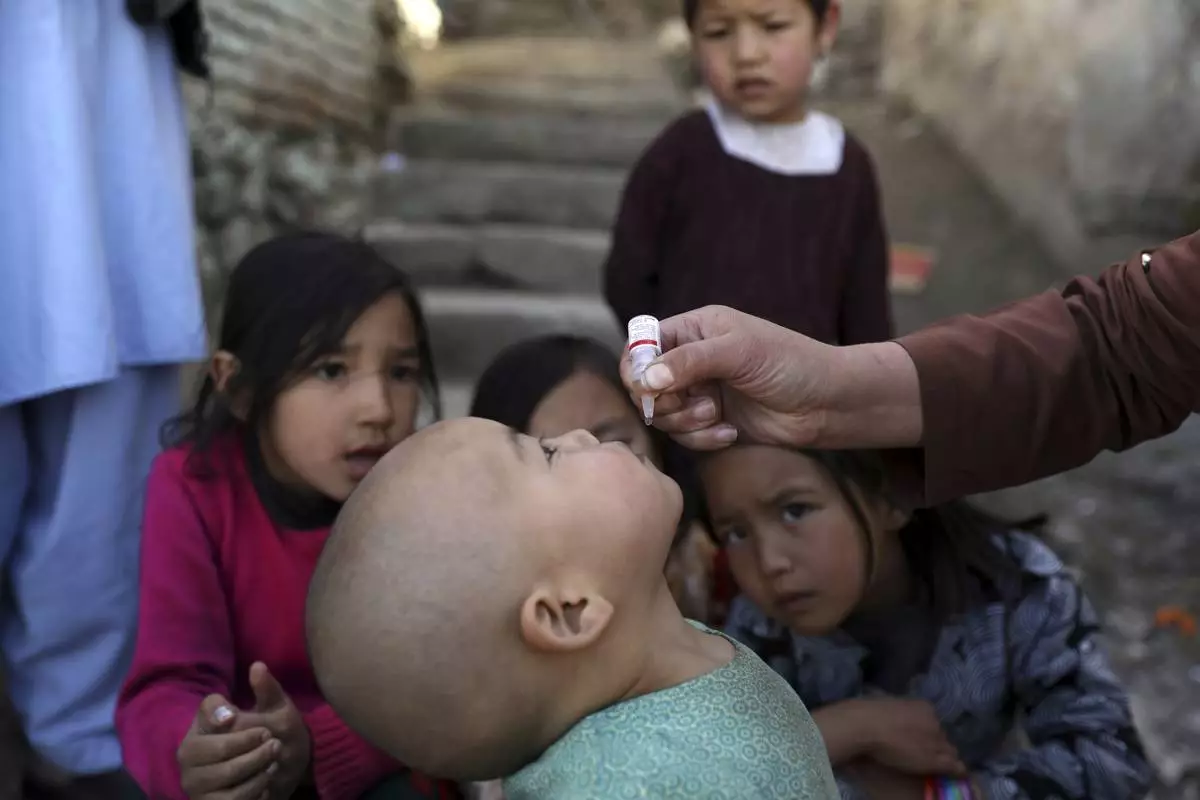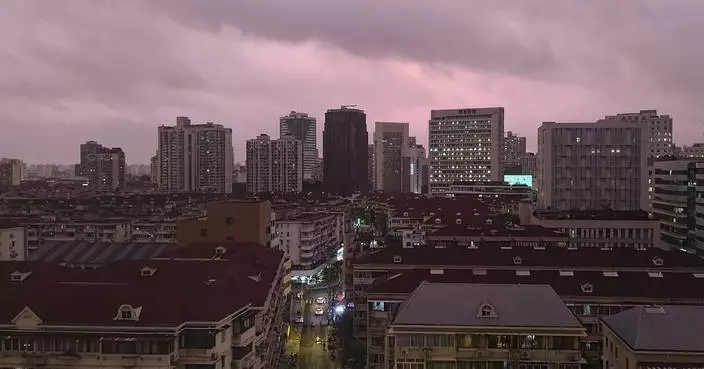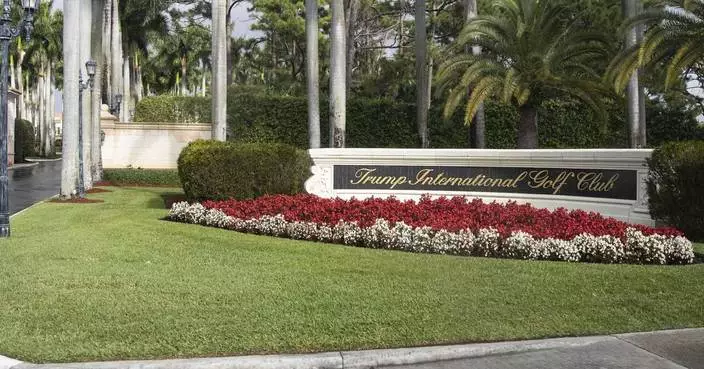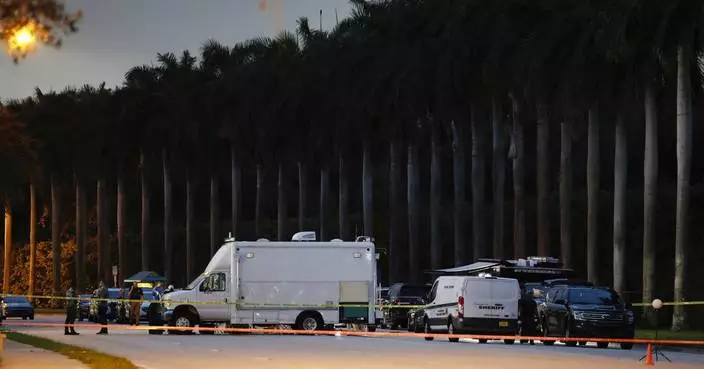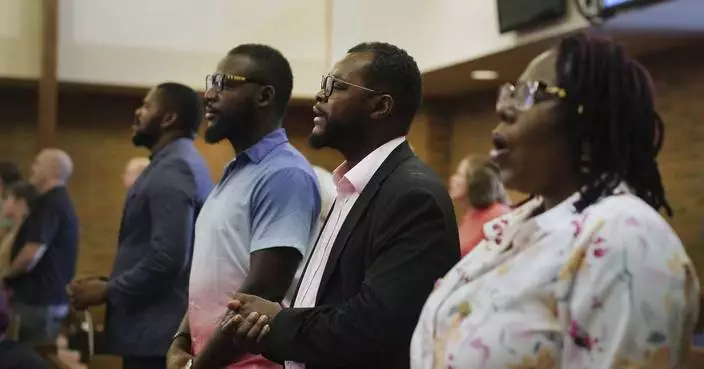MEXICO CITY (AP) — In the 1940s, Mexican artist Diego Rivera had a dream: to build a sacred place to preserve and display his lifelong collection of pre-Hispanic art.
The Anahuacalli Museum in Mexico City, which celebrates its 60th anniversary this month, is everything he hoped for.
Inch by inch, its pyramid structure honors the Mexica worldview. Among its 60,000 archeological pieces, dozens represent ancient deities. And though foreigners visit on a regular basis, its workshops and year-round activities aim to connect the local communities to their historic roots.
“This is Diego Rivera’s dream come true: a space in which art, nature and the public coexist,” said María Teresa Moya, director of the Anahuacalli.
The Mexican muralist was aligned with a Communist ideology. He and his wife — renowned artist Frida Kahlo — openly criticized the Catholic Church. But their fascination with Mexico’s pre-Hispanic spirituality is palpable through their work.
In Rivera’s case, he bought and collected archeological pieces, depicted them on his murals and designed the Anahuacalli for their exhibition.
“Diego had a great respect, affection and admiration for our ancestors,” Moya said. “Everything he designed or created was inspired by our origins.”
Mexico’s pre-Hispanic worldview was so important to him that it even influenced the Anahuacalli’s architecture. While its main floor represents the underworld — and feels dimly lit and cold — the second and third levels were inspired by the earthly and celestial worlds, which makes them seem warmer and flooded by light.
Though Mexica heritage is dominant in the museum’s design, visitors can also appreciate other Mesoamerican influences, said Aldo Lugo, a researcher who points out the Mayan, Toltec and Teotihuacan elements through guided tours of the museum.
The three-story pyramid was inaugurated in September 1964, seven years after Rivera died. Its name, Anahuacalli, translates from the Nahuatl language as “house surrounded by water.”
According to a recent government publication, the Anahuacalli is distinctive among Mexican museums in being situated in an ecological reserve of about six acres (2.6 hectares) protecting nearby flora and fauna. The museum itself was built with volcanic rock to fuse with its natural surroundings.
Rivera and Kahlo first thought of the place as an oasis where they could move away from the buzz of the city. Later, even as their plans changed and Rivera decided to build the museum, the couple desired to be buried in the Anahuacalli’s underworld.
The adjoining niches of the main floor are currently empty. Kahlo’s remains are located in her “Blue House” and Rivera was buried in the Rotunda of Illustrious Persons, a national cemetery site that honors those who made major contributions to Mexico's history and culture. “But we keep the niches, just in case they end up here,” Lugo said.
During a one-hour visit through the Anahuacalli, its various rooms and cabinets can be read as a book.
From the start, Coatlicue, mother of the gods, greets all visitors from the ceiling. Her myth was special for the pre-Hispanic understanding of the world: a battle between her son and daughter — the sun and the moon — explained the origins of day and night.
The Anahuacalli’s main floor is focused on rituals and burials. The first level displays archeological pieces depicting everyday life, while the second level — representing the celestial world — is devoted to the gods.
The museum’s walls and stairs bear meanings too. Each of the Anahuacalli's four corners depict a natural element — earth, wind, water and fire — and their respective pre-Hispanic deities. The stairs represent the transition between the stages of one’s existence.
“The Anahuacalli is a temple,” Moya said. “And one of a kind.”
To celebrate its 60th anniversary, the museum planned various activities reflecting on Mexico’s artistic and cultural landscape.
Aside from a gastronomic festival in June and monthly lectures on Rivera’s legacy — which the public can attend through December — neighbors who knew the artist are working on a video to preserve the oral collective memory of the museum and the neighborhood where it’s located.
“We want the community to keep feeling that this space belongs to them,” Moya said.
Contemporary artists are often invited to host exhibitions at Anahuacalli. “Atomic amnesia,” by Mexican sculptor Pedro Reyes, will be on exhibit from Sept. 13 through January 2025.
His 20 works on display, a press release said, were inspired by one of Rivera’s murals, which was highly controversial and mysteriously disappeared, though its sketch is preserved: “The Nightmare of War, The Dream of Peace. A Realist Fantasy (1952).”
Like Rivera, Reyes' art reflects society. His works are meant to express the current political landscape and, following in Rivera's footsteps, he regards his art as a platform to protest and raise awareness.
“Diego was quite controversial,” Moya said. “On the one hand, he had a huge interest in rescuing our pre-Hispanic heritage, but he also adhered to socialism in an unwavering way.”
“He wanted us to look at our past to understand our present and plant something for the future.”
Associated Press religion coverage receives support through the AP’s collaboration with The Conversation US, with funding from Lilly Endowment Inc. The AP is solely responsible for this content.
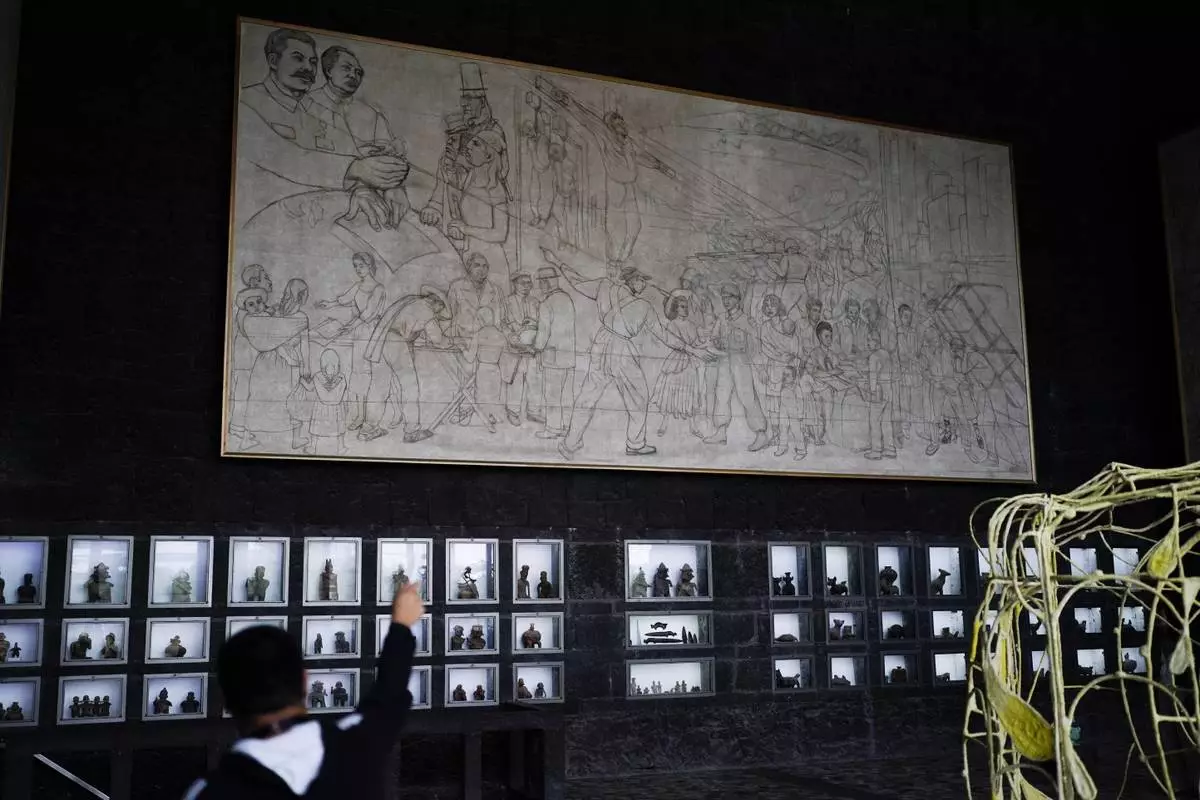
A visitor walks through the interior of the Anahuacalli Museum in Mexico City, Tuesday, Aug. 20, 2024. While its main floor represents the underworld — and feels dimly lit and cold — the second and third levels were inspired by the earthly and celestial worlds, which makes them seem warmer and flooded by light. (AP Photo/Eduardo Verdugo)
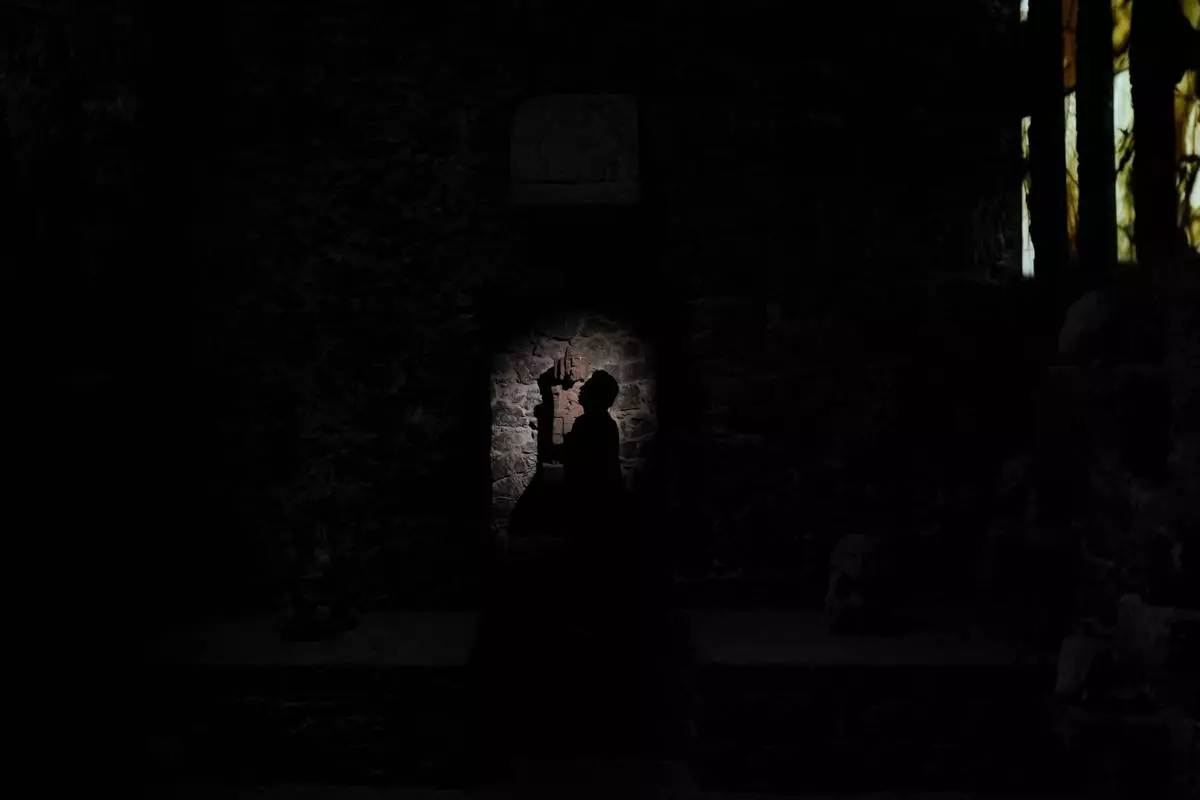
A visitor is silhouetted against an interior wall of the Anahuacalli Museum in Mexico City, Tuesday, Aug. 20, 2024. While its main floor represents the underworld — and feels dimly lit and cold — the second and third levels were inspired by the earthly and celestial worlds, which makes them seem warmer and flooded by light. (AP Photo/Eduardo Verdugo)
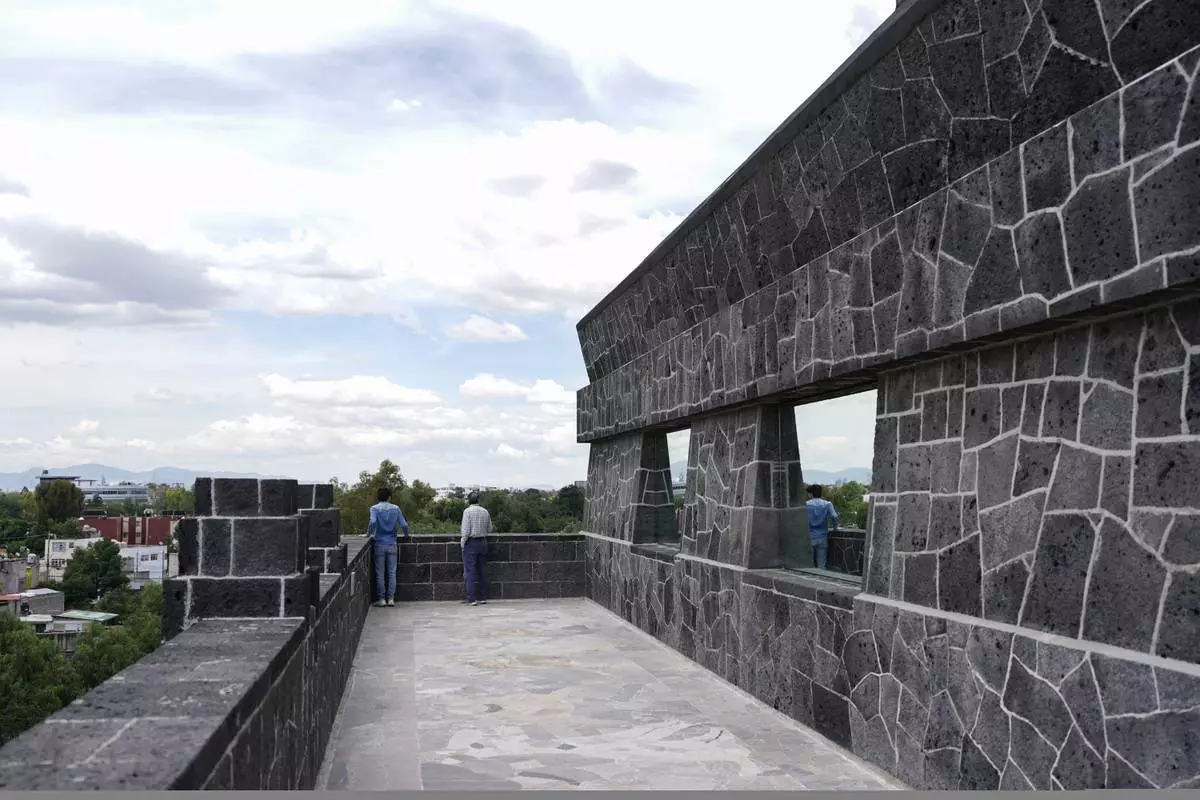
Visitors look out from the exterior of the Anahuacalli Museum in Mexico City, Tuesday, Aug. 20, 2024. Built by Mexican artist Diego Rivera, its name, Anahuacalli, translates from the Nahuatl language as "house surrounded by water." (AP Photo/Eduardo Verdugo)
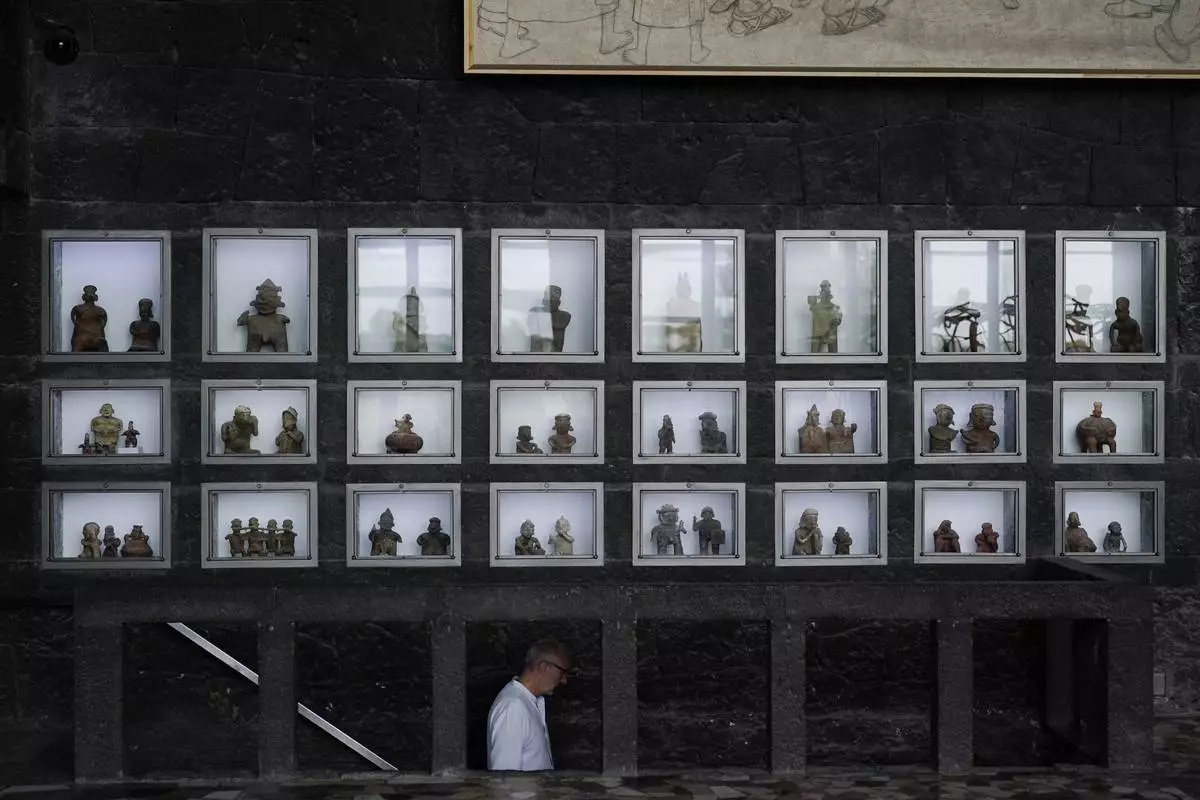
Pre-hispanic ceramics are displayed in glass front niches in the Anahuacalli Museum in Mexico City, Tuesday, Aug. 20, 2024. Built by Mexican artist Diego Rivera to preserve and display his lifelong collection of pre-Hispanic art, the museum is celebrating its 60th anniversary. (AP Photo/Eduardo Verdugo)
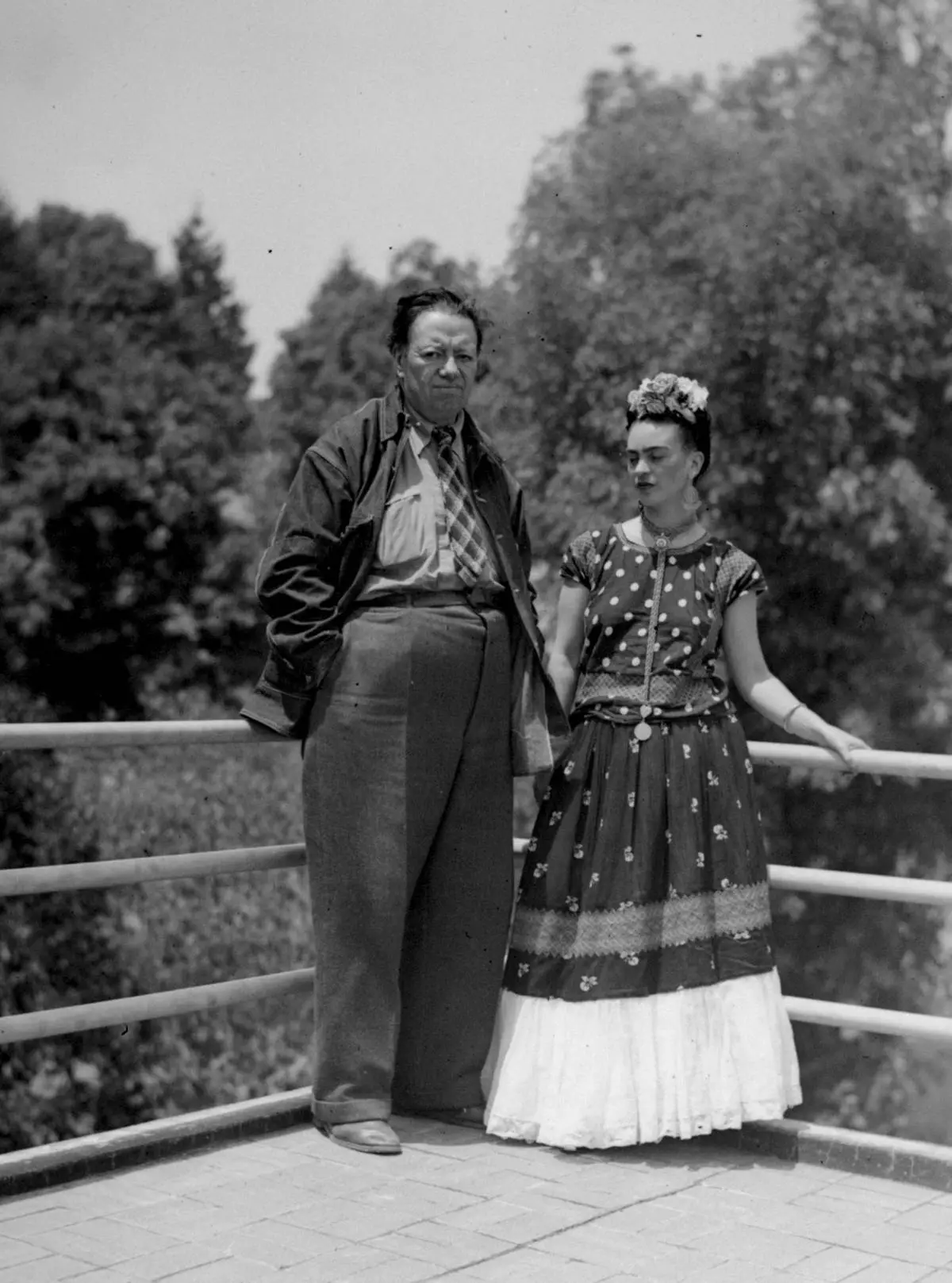
FILE - Mexican muralist Diego Rivera and Frida Kahlo photographed on a balcony at their home in Mexico City, April 13, 1939. (AP Photo, File)

A visitor walks past pre-Hispanic ceramics displayed in glass front niches in the Anahuacalli Museum in Mexico City, Tuesday, Aug. 20, 2024. Built by Mexican artist Diego Rivera to preserve and display his lifelong collection of pre-Hispanic art, the museum is celebrating its 60th anniversary. (AP Photo/Eduardo Verdugo)
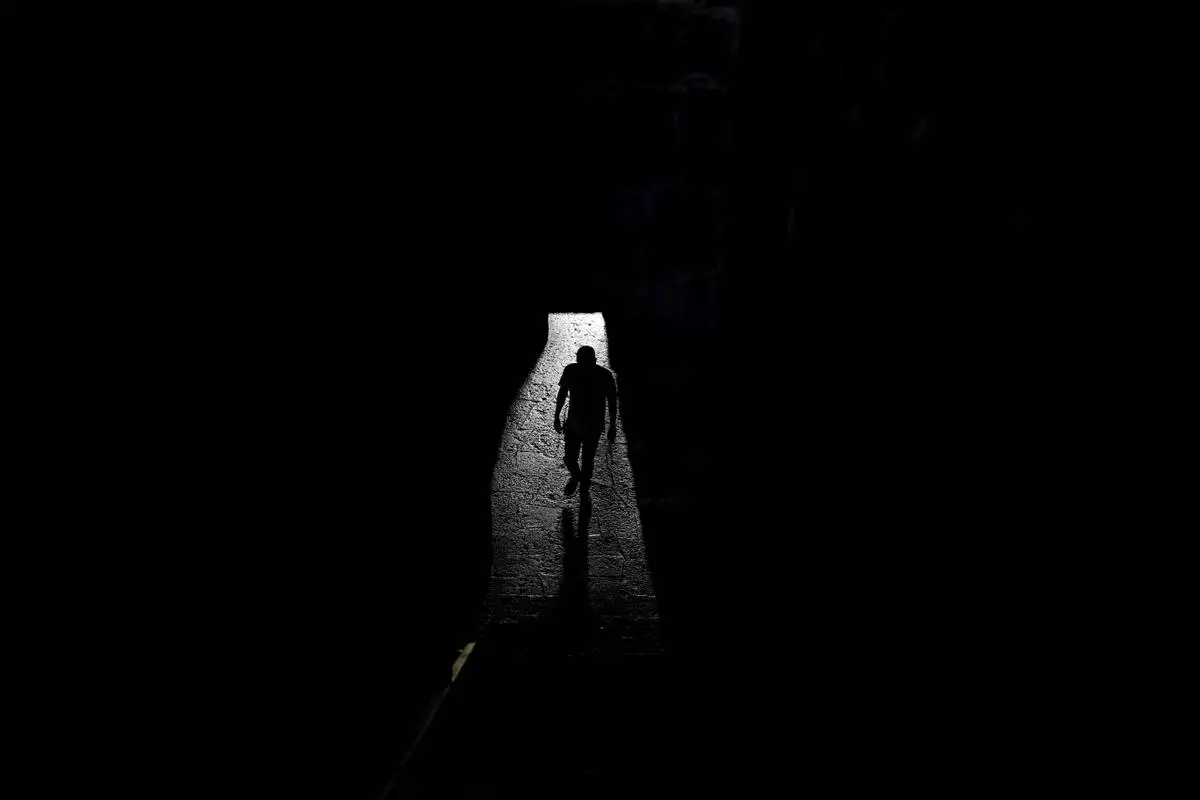
A visitor walks through the interior of the Anahuacalli Museum in Mexico City, Tuesday, Aug. 20, 2024. Built by Mexican artist Diego Rivera to preserve and display his lifelong collection of pre-Hispanic art, the museum is celebrating its 60th anniversary. (AP Photo/Eduardo Verdugo)
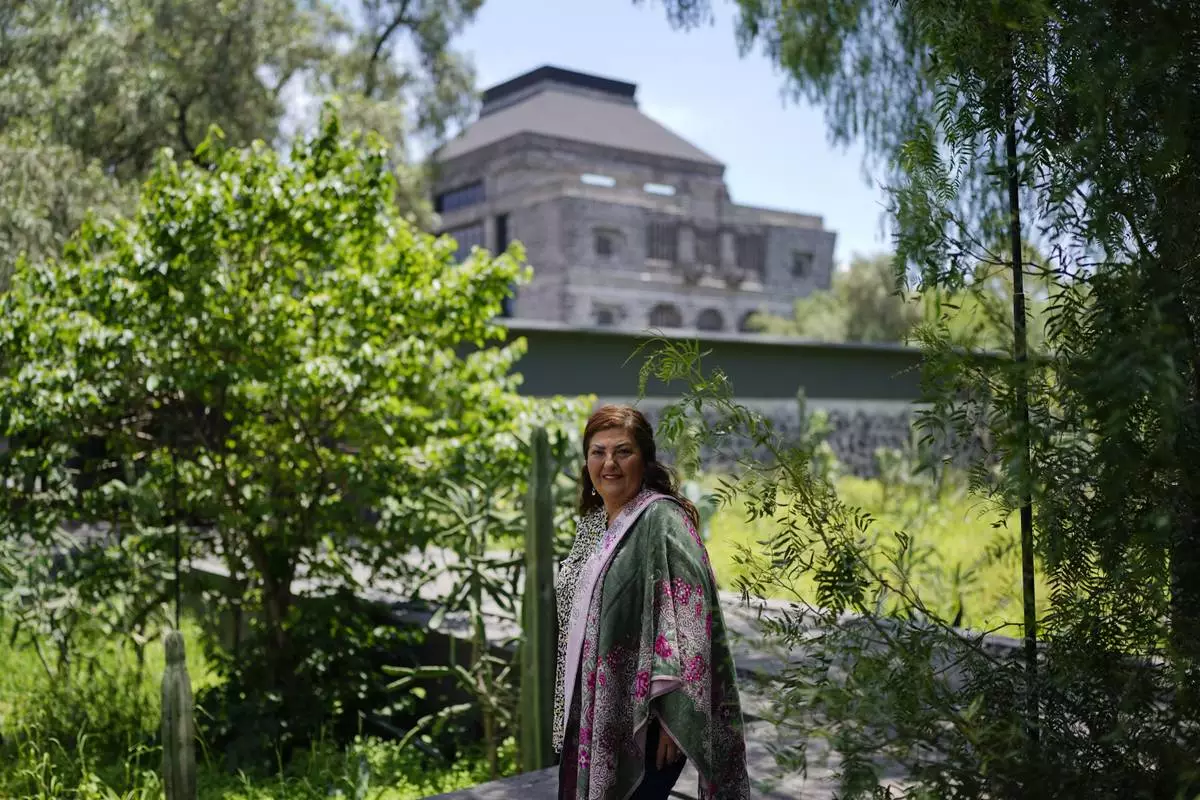
María Teresa Moya, director of the Anahuacalli Museum, poses for a photo on museum grounds in Mexico City, Tuesday, Aug. 20, 2024. Built by Mexican artist Diego Rivera to preserve and display his lifelong collection of pre-Hispanic art, the museum is celebrating its 60th anniversary. (AP Photo/Eduardo Verdugo)
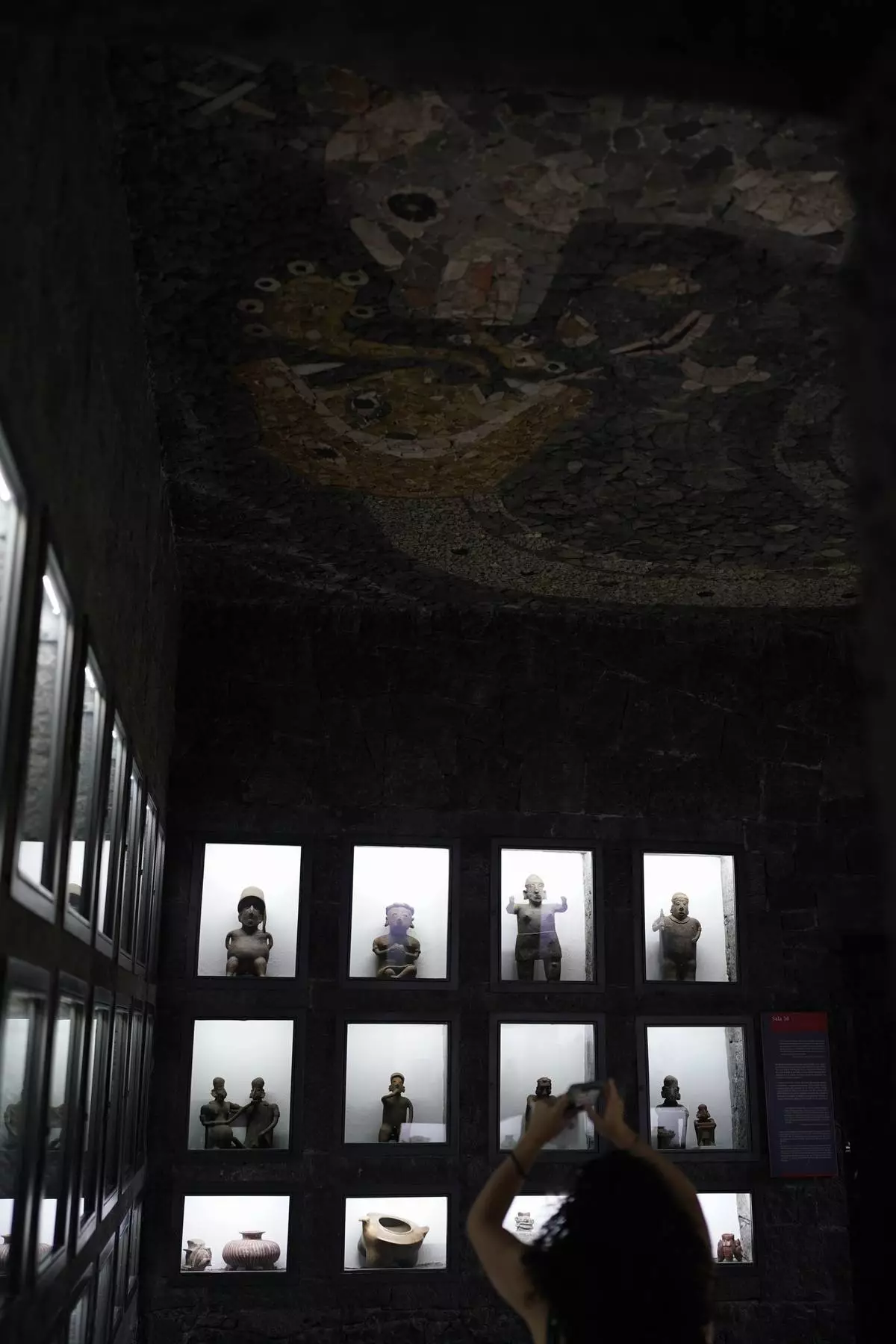
A visitor takes a photo of a ceiling mosaic in the Anahuacalli Museum in Mexico City, Tuesday, Aug. 20, 2024. Built by Mexican artist Diego Rivera to preserve and display his lifelong collection of pre-Hispanic art, the museum is celebrating its 60th anniversary. (AP Photo/Eduardo Verdugo)
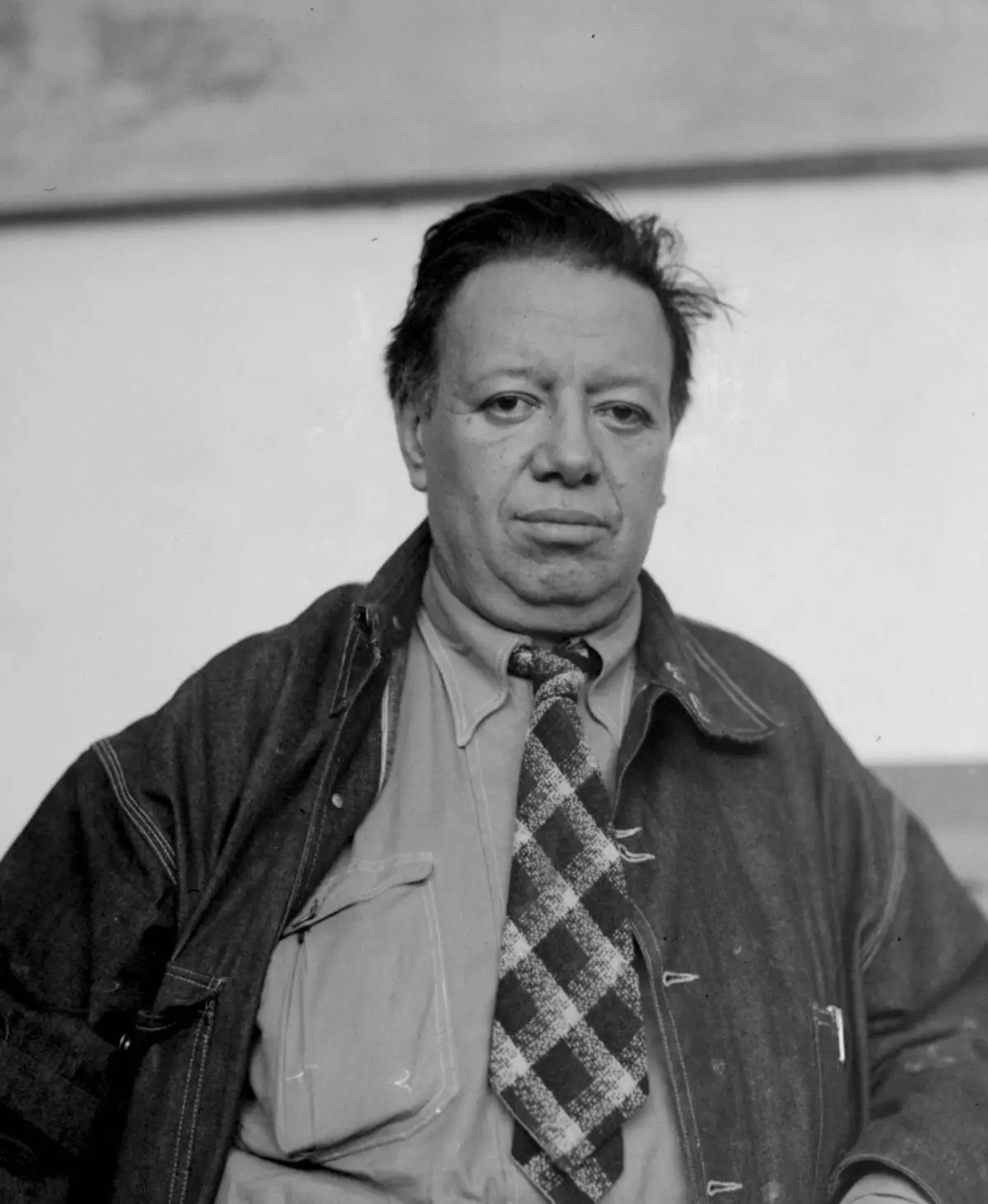
FILE - Mexican artist Diego Rivera poses for a photo in Mexico City, April 14, 1939. In the 1940s, Rivera built the Anahuacalli Museum to preserve and display his lifelong collection of pre-Hispanic art. (AP Photo, File)
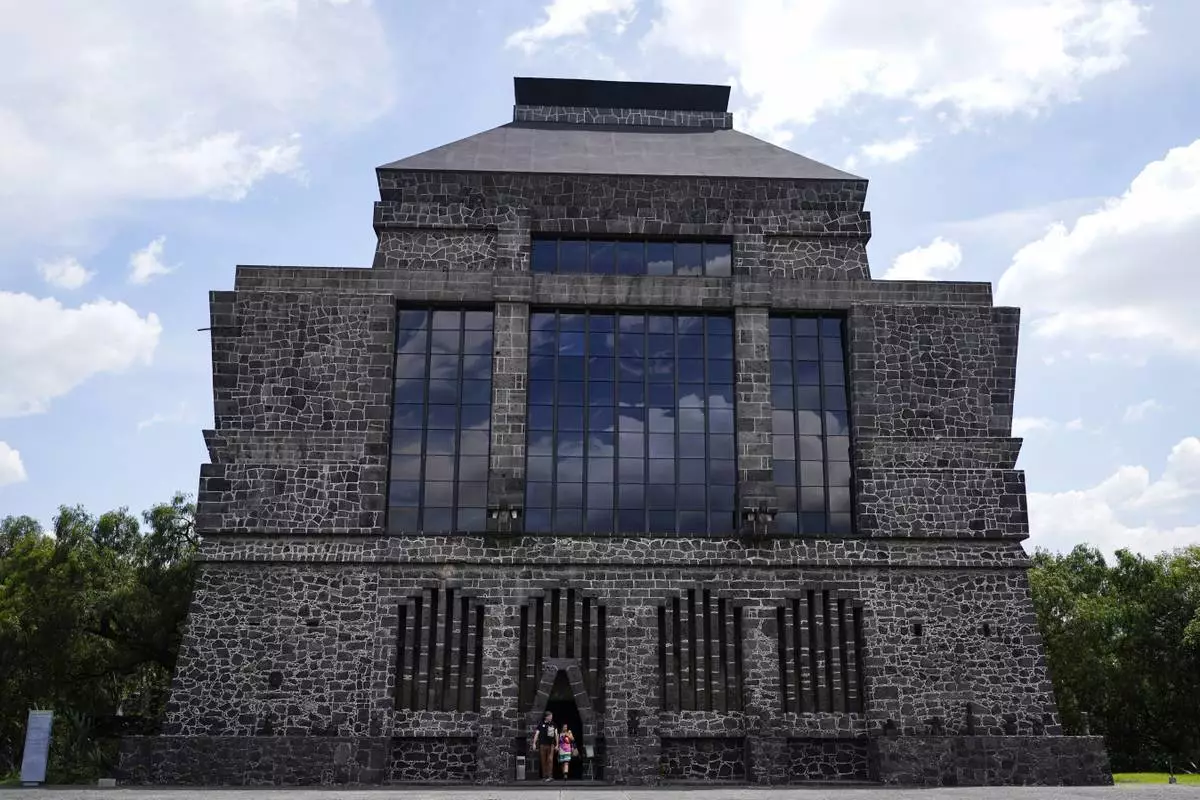
Visitors exit the Anahuacalli Museum in Mexico City, Tuesday, Aug. 20, 2024. Built by Mexican artist Diego Rivera, its name, Anahuacalli, translates from the Nahuatl language as "house surrounded by water." (AP Photo/Eduardo Verdugo)

A visitor looks at pre-Hispanic ceramics on display at the Anahuacalli Museum in Mexico City, Tuesday, Aug. 20, 2024. Built by Mexican artist Diego Rivera to preserve and display his lifelong collection of pre-Hispanic art, the museum is celebrating its 60th anniversary. (AP Photo/Eduardo Verdugo)


